Last fall the State Museum of Pennsylvania hosted their annual workshop in archaeology entitled Hidden Stories: Uncovering African American History through Archaeology and Community Engagement. The theme was born out of the acknowledgement that African Americans are vastly underrepresented in the historic record and the representations that are present are typically unfairly biased.
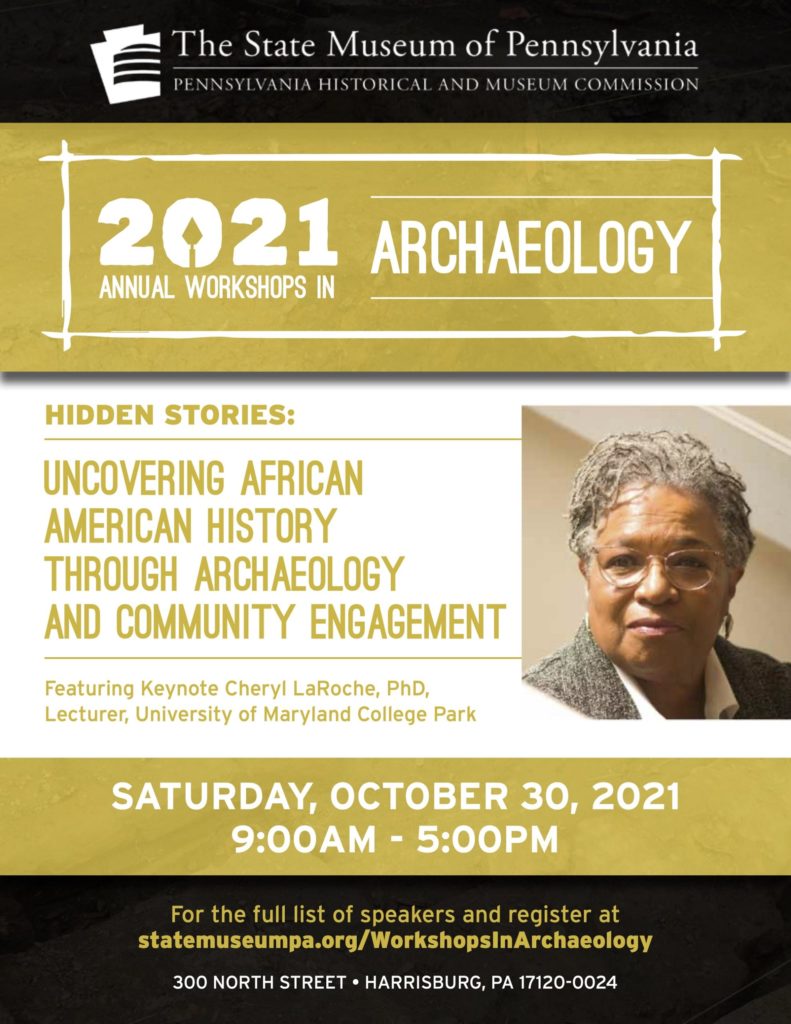
Alternatively, archaeology has proven to be an effective method to provide glimpses into the lives of marginalized populations and tell the untold stories lost to history. Descendant communities and communities in general can play an integral role in uncovering these hidden narratives and an important goal of the workshop was to provide the region’s African American community and scholars the opportunity to present their research and entertain ways in which the Commonwealth’s archaeologists and the African American community can work together.
A common issue that became salient during the workshop was that in many cases, the descendant communities were displaced from the important places that defined the historic African American communities. Furthermore, it is also common that cemeteries are often the only remaining vestige of that community, and because the community was dispersed, these spaces are exceptionally valuable and vulnerable.
These issues are central to one of the workshop’s presenters, Barbara Barksdale with Pennsylvania Hallowed Grounds (PAHG). PAHG’s official mission is “to honor, interpret, and preserve African American cemeteries and burial sites of Civil War African American Sailors and United States Colored Troops in Pennsylvania” (PAHG 2022). While PAHG’s mission is focused on honoring the lives of African American Civil War veterans, the organization’s founding member and Chairperson, Barbara Barksdale uses cemeteries to educate the public about African American history in general and promote stewardship of these important resources.
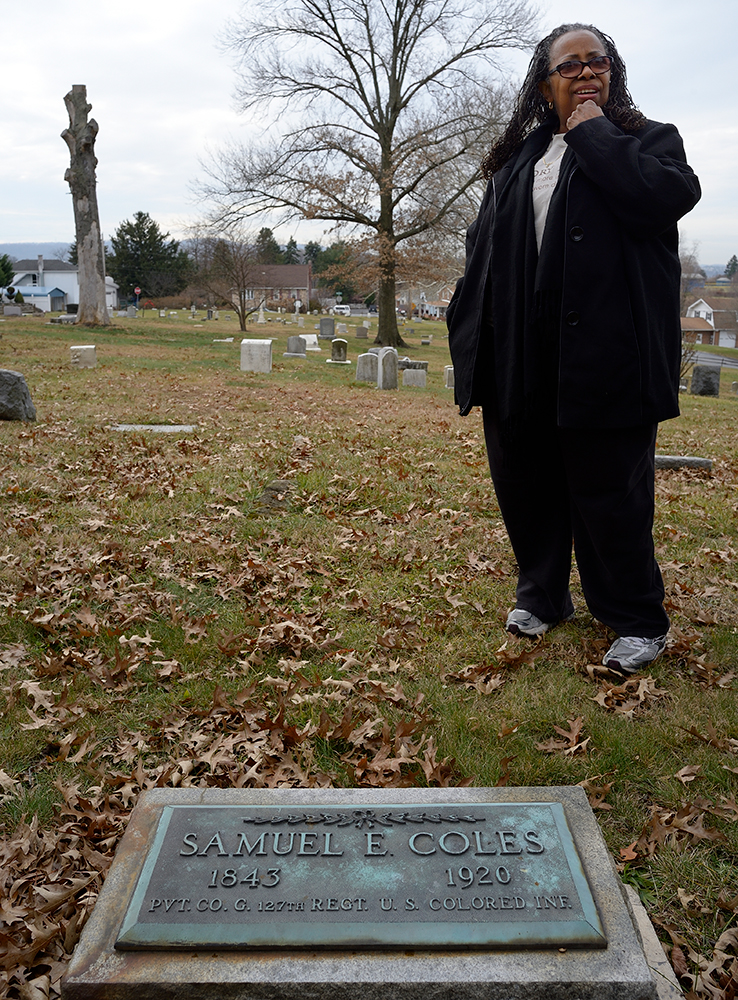
Ms. Barksdale’s involvement with PAHG began with her journey with the Historic Midland Cemetery in Swatara Township, Dauphin County. Midland Cemetery began circa 1795 as a cemetery for enslaved families working the farmland in Swatara Township. Over time this land evolved into the final resting place for freed persons and African American communities in Steelton, Harrisburg, and Swatara Township (Friends of Midland 2022). Barbara’s earliest memories of Midland Cemetery date to her childhood when her parents would take her to what was then an overgrown forested lot during the Memorial Day holiday to visit her grandfather’s grave.
Barbara was reintroduced to Midland Cemetery as an adult when she was detoured past the cemetery during a winter storm. Having only seen the cemetery in the spring, Barbara got a new perspective on Midland now that the winter had removed the leaves from the tree and she realized that the cemetery was much larger than she thought. On that day Barbara unknowingly began a 30 plus year project to restore Midland Cemetery and embarked on a journey where she became an educator, a steward, and ultimately, the “Cemetery Lady”.
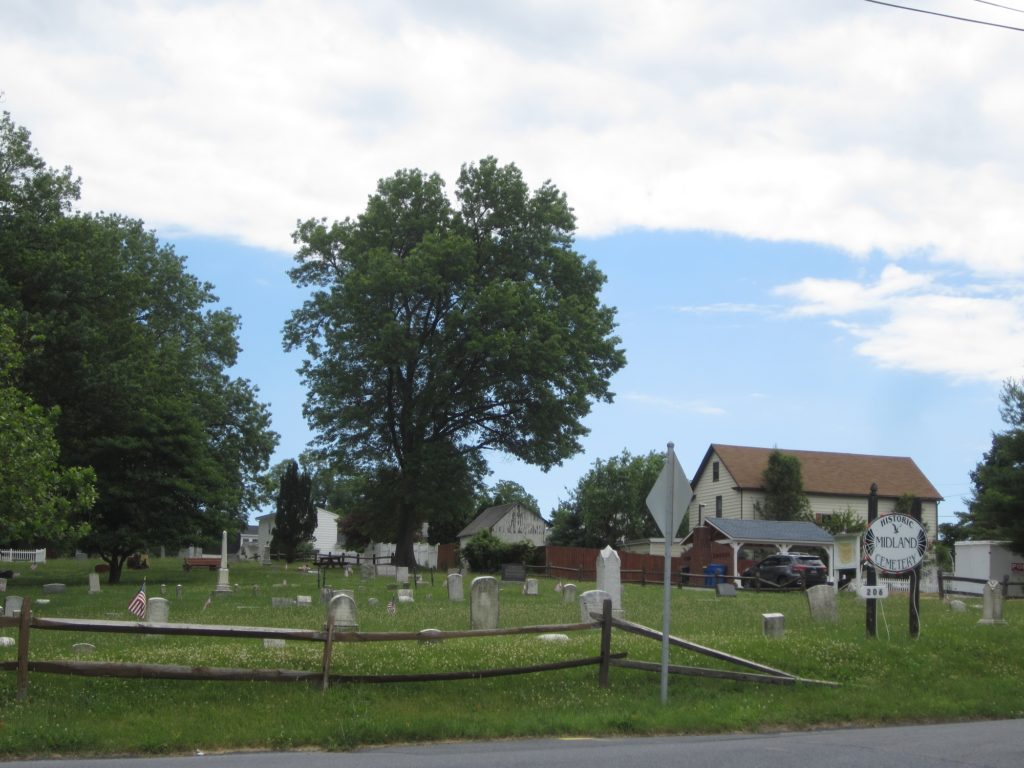
Barbara’s presentation at the workshop was not a new one and based on her delivery and familiarity with the content, I imagine she has presented a dozen times. What was new, was the audience. While archaeologists regularly deal with cemeteries, they are resources that we literally try to avoid. The first rule of cemetery preservation is “Do no harm,” and archaeologists typically try to do just that by using noninvasive methods like ground penetrating radar to delineate burials and cemetery boundaries to protect them from other projects.
Although this type of documentation may not be as exciting as restoration projects or even the popular genealogical research associated with cemetery preservation, it is practical and useful for establishing baseline information to develop a more comprehensive cemetery preservation plan.
Barbara was not the only presenter at the workshop that discussed issues associated with African American cemeteries in the region, and the common problems across all examples were unknown cemetery boundaries, unmarked graves, and not enough volunteers. It became clear over the course of the workshop that we, as archaeologists, had a lot to offer.
Ira Beckerman, the former Director of Cultural Resources at PennDOT and current President of the Pennsylvania Archaeological Council (PAC) was at the workshop and recognized that PAC’s membership could help and immediately approached Barbara to see what we could do. Barbara and Ira decided that a meeting to discuss specifics was in order and invited other representatives from PAGH, Friends of Midland Cemetery, archaeologists from the PA State Museum, and the PA SHPO to lunch at Swatara Township in March 2022.
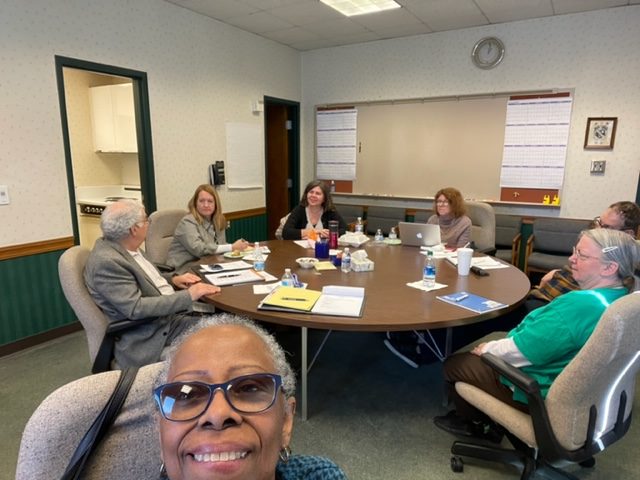
The scope of this first meeting was broad and laid the foundation for a partnership between PAHG, Friends of Midland Cemetery, PAC, the PA SHPO, and the State Museum with the goal of assisting PAHG in their mission by developing guidance on how the state’s archaeologists can assist in African American cemetery preservation across the Commonwealth. Together we decided that we should create a pilot project to document a cemetery using PAC’s membership and archaeological methods that could be applied to other cemeteries with similar needs.
Ira brought the partnership and pilot project up for discussion at the PAC Spring meeting the following April, and the membership voted to contribute $5,000 towards the endeavor and create a committee to oversee the development. The committee included Indiana University of Pennsylvania professor and Pennsylvania Historic Preservation Board Member, Dr. Ben Ford, former PA SHPO archaeologist and current archaeological consultant with Christine Davis and Associates (CDC), Kira Heinrich, archaeological consultant with Big Pine Consultants, Lisa Dugas, and I, Casey Hanson, PA SHPO archaeologist and PAC Executive Board member.
With support from PAC membership, funding in place, and a representative committee assembled, the committee began to meet with the rest of the partnership to determine the scope and objectives of the pilot project.
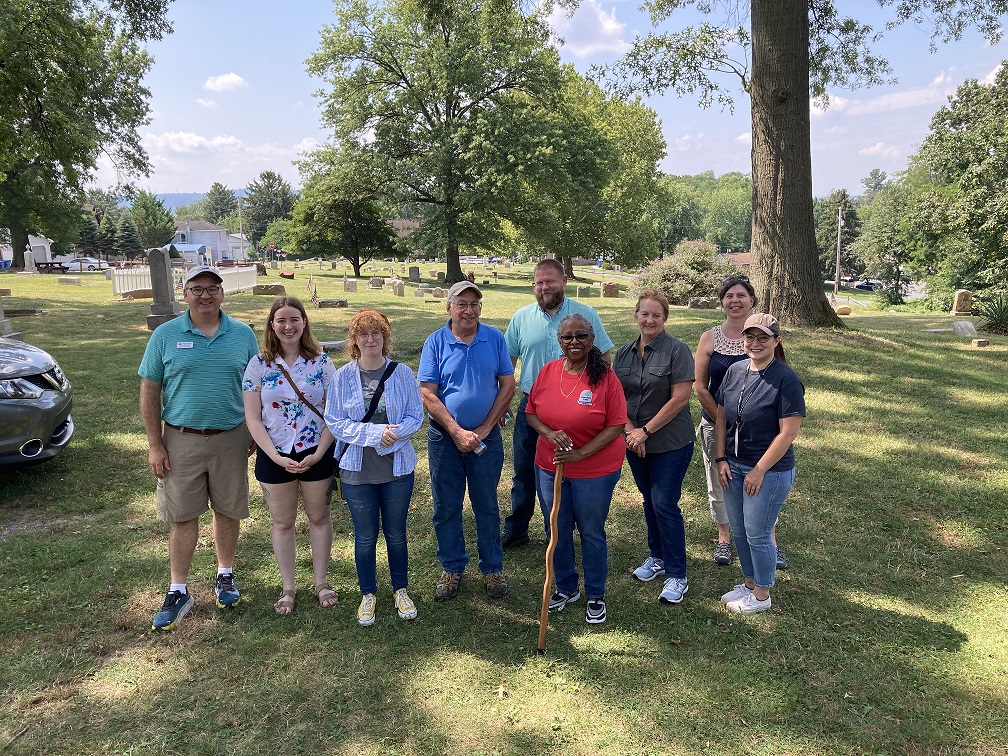
Over the course of a series of meetings, the partnership together determined that Midland Cemetery was the logical cemetery for the pilot project, and despite Barbara’s extensive research and intimate knowledge of Midland, there was no baseline documentation of the current conditions of the cemetery and no current precise baseline map existed.
A basic principle in archaeology is that we work from the known to the unknown, so before we can begin to identify unmarked graves at the cemetery (the unknown), we should comprehensively document what is present (the known). Midland Cemetery is roughly three acres and contains an estimated 700 visible grave markers and countless other visible features. To tackle this imposing mapping and documentation project, we proposed a PAC Day of Service at Midland Cemetery to take place on October 30, 2022, the same weekend as the 2022 State Museum Archaeological Workshop when most of the PAC membership would already be in Harrisburg.
The plan is to have PAC membership provide Global Positioning System (GPS) units capable of sub-meter accuracy to systematically record the exact locations of all above ground-features. Archaeologists will work with volunteers from the local community to collect GPS points, photographs, and text-based data associated with each headstone, footstone, and other features. Data collection of this nature is labor intensive and time consuming, but we anticipate that the event will be well attended by PAC members and the community.
Once collected, these data will be imported into a Geographic Information System (GIS) database and georeferenced. Existing historic-age plat maps or aerial maps will be rubber-sheeted on to the GIS map and serve as the base map for any future projects including ground penetrating radar or other remote sensing surveys.

The hope is that the mapping project will provide a useful tool for Barbara and the Friends of Midland that can continue to be built upon as the greater partnership grows and evolves. So far, the community has shown a lot of interest in volunteering, and we recognize the volunteers as an opportunity to learn more about Midland and the community and expand the partnership.
We also hope that this is a true pilot project that can be improved upon and applied to other cemeteries. Lebanon Cemetery in York County is one such cemetery, and while their needs are not identical to Midland’s, the hope is that we can work with their friend’s group, volunteers, and community to refine the pilot project and work to preserve these irreplaceable pieces of history.
If interested in volunteering for the Day of Service at Midland Cemetery in Swatara Township, Dauphin County on October 30, 2022 at noon, please contact me at chanson@pa.gov.
Citations
Friends of Midland Cemetery
2022 The Midland Story, Its History. Historic Midland Cemetery. http://www.midlandcemetery.com/history/the-midland-story/index.html (accessed 10/5/2022).
Pennsylvania Hallowed Grounds
2022 PAHG, Preserving PA African American Historic Cemeteries. https://pahallowedgrounds.org/ (accessed 10/2/2022).
Comment Policy
PHMC welcomes and encourages topic-related comments on this blog. PHMC reserves the right to remove comments that in PHMC’s discretion do not follow participation guidelines.
Commenters and Comments shall be related to the blog post topic and respectful of others who use this site.
Commenters and Comments shall not: use language that is offensive, inflammatory or provocative (this includes, but is not limited to, using profanity, obscene, or vulgar comments); disparage other commenters or people; condone illegal activity; identify the location of known or suspected archeological sites; post personal information in comments such as addresses, phone numbers, e-mail addresses or other contact details, which may relate to you or other individuals; impersonate or falsely claim to represent a person or an organization; make any commercial endorsement or promotion of any product, service or publication.
If you would like to comment on other topics not related to this blog post but related to PHMC, please fill out the PHMC Contact Us Form.
A fantastic illustration of community archaeology can be seen in the blog post written by Pennsylvania Historic Preservation on the Midland Cemetery. The fact that so much information about a town can be gleaned from the investigation of its cemeteries served as a motivational example. The essay was clearly written and full of useful information, and I admired the author’s commitment to the maintenance of the community’s historical records.